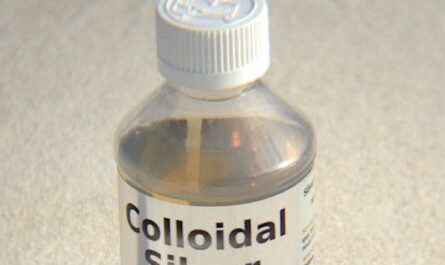Polyunsaturated fatty acids or PUFAs are fats that are considered essential for human health. While they make up only a small portion of the total fats consumed, PUFAs play an important role in many bodily functions. This article discusses the various types of PUFAs, their health benefits and sources to obtain them through diet.
Main types of PUFAs
There are two main types of Polyunsaturated Fatty Acids – omega-3 and omega-6 fatty acids. Both are essential fatty acids that our body cannot produce on its own and must be obtained through food.
Omega-3 fatty acids – The major omega-3 fatty acids are alpha-linolenic acid (ALA), eicosapentaenoic acid (EPA), and docosahexaenoic acid (DHA). ALA is found in plant oils like flaxseed, soybean and canola oils. EPA and DHA are found abundantly in fatty fish and fish oils.
Omega-6 fatty acids – The primary omega-6 fatty acid is linoleic acid found mainly in plant oils like soybean, corn, and sunflower oils. Gamma-linolenic acid (GLA) is another omega-6 fatty acid found in evening primrose, black currant, and borage oils.
Health benefits of PUFAs
Both omega-3 and omega-6 fatty acids are beneficial for health when consumed in appropriate amounts:
– Heart health – A diet rich in omega-3 fatty acids reduces risk of coronary heart disease and lowers bad LDL cholesterol and triglyceride levels. Omega-6 GLA helps control heart rate and blood pressure.
– Brain development – DHA, an omega-3 fatty acid, is important for brain and eye development in infants. DHA plays an important role in brain function throughout life.
– Joint pain – EPA and DHA from fish oils relieve joint pain caused by rheumatoid arthritis and similar inflammatory conditions.
– Mood regulation – omega-3 fatty acids can treat mild to moderate depression. They interact with neurotransmitters in the brain.
– Skincare – Evening primrose oil (omega-6 GLA) helps reduce eczema, acne and other skin issues from its anti-inflammatory effect.
Sources of PUFAs
Given below are some good dietary sources of PUFAs:
– Fatty fish – Salmon, trout, sardines are excellent sources of anti-inflammatory omega-3 fatty acids EPA and DHA. Aim for 2-3 servings of fish per week.
– Flaxseeds/chia seeds – They are among the best plant sources of ALA omega-3 fatty acid. Add 1 tbsp ground flaxseeds or chia seeds to foods daily.
– Walnuts – A handy snack, walnuts provide ALA as well as muscle-supporting protein and minerals. Eat a small handful.
– Soybean, canola & olive oils – They have ratios of healthy omega-6 to omega-3 fats. Use in moderation for cooking, dressings etc.
– Tofu and edamame – Soy-based foods provide substantial amounts of ALA for vegetarians and vegans lacking other omega-3 sources.
Ensuring right PUFA balance
While consuming enough PUFAs is important, maintaining the correct balance between omega-3 and omega-6 fatty acids is also key. The standard Western diet tends to be excessive in omega-6s from foods like vegetable oils, resulting in an imbalance. Experts recommend an omega-6 to omega-3 ratio of 4:1 or lower for optimal health. Consuming plenty of omega-3 rich foods along with limiting refined vegetable oils can help achieve this balance.
Both omega-3 and omega-6 polyunsaturated fatty acids are essential nutrients for human health. While omega-3s are more def icient in modern diets, a diet balanced with generous amounts of fatty fish, flaxseeds, chia seeds and walnuts along with moderate vegetable oils can provide these healthy fats and support important functions like brain development, heart health and more. Making small changes like incorporating these superfoods can go a long way in boosting overall well-being.
*Note:
1. Source: Coherent Market Insights, Public sources, Desk research
2. We have leveraged AI tools to mine information and compile it




